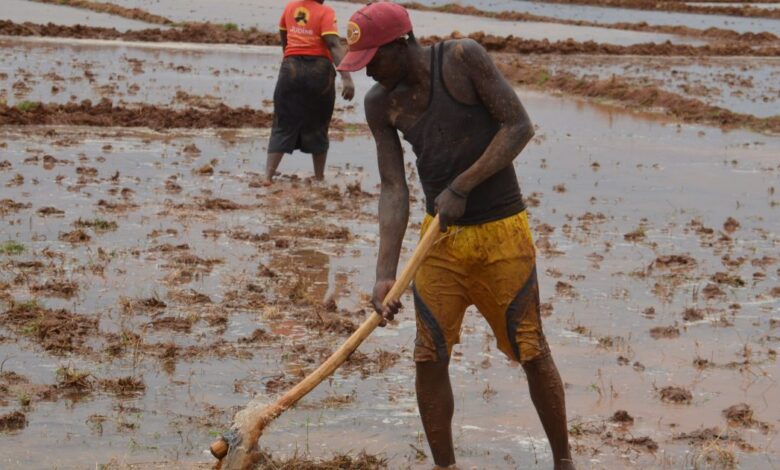Tana Irrigation Scheme Roars Back To Life

Tana Irrigation Scheme is buzzing with farming activities 13 years after it was revived, after collapsing in 1989 when River Tana changed its course.
When the scheme rehabilitation exercise was initiated in 2009, the government supported farmers with inputs through the Economic Stimulus Program, which saw the entire area cultivated.
Consequently, though the support was temporary, farmers can now fend for themselves, thanks to the then timely government intervention.
The scheme under the National Irrigation Authority (NIA) has an average gross margin of Sh126 million every year through income from different crops under cultivation.
The scheme, with a gazetted area of more than 12,000 acres is currently dominated by rice farming mainly the Kwamboka variety, developed by the Kenya Agricultural and Livestock Research Organization (KALRO), which performs well in Tana’s climatic conditions.
“This time we have 5,000 acres that have irrigation infrastructure and are utilized for food production. The scheme has a gazetted area of 12,630 acres, there are other parts that have been used for settlements and access roads. We have the ability to expand this scheme up to 9,000 acres with the current irrigation infrastructure,” said Tana Irrigation Scheme Manager James Kirimi.
The scheme uses diesel-powered generators to pump water from River Tana to the main canals and finally onto the farms. Feasibility studies are ongoing to explore the use of gravity instead of generators.
“If water comes with gravity, it will increase acres and reduce the cost of operation and maintenance,’’ emphasized Kirimi.
The scheme was initially established for the cultivation of cotton in the 1970s and by 1980s, Tana and Bura irrigation schemes were by then producing 40 percent of the national cotton production.
However, as the industry faltered with liberation, the plant went down, and farmers started cultivating other crops like rice, in addition to sunflower, green grams, maize, and horticulture crops that have contributed to the development of the scheme.
“As we speak, we have 2200 acres under rice production, 1100 (maize), 200 acres (seed maize), 400 acres (green grams), while 150 acres were under horticultural crops. The market is readily available for the crops dominating the scheme. The quality of the rice is good and farmers sell it in the farms,’’ noted Kirimi.
The manager exuded confidence that Tana River County can contribute to the country’s Big 4 Agenda on food security and sustainable production through irrigation.
At the same time, in line with President Dr. William Ruto’s call to plant trees to mitigate against the adverse effects of climate change, the scheme has embraced tree planting.
“We are doing fruit trees; we have a nursery for mango seedlings. We want to increase forest cover and improve household income and also contribute to nutrition. We are distributing those trees to our farmers and the entire community as part of Corporate Social Responsibility (CSR),’’ added the scheme manager.







